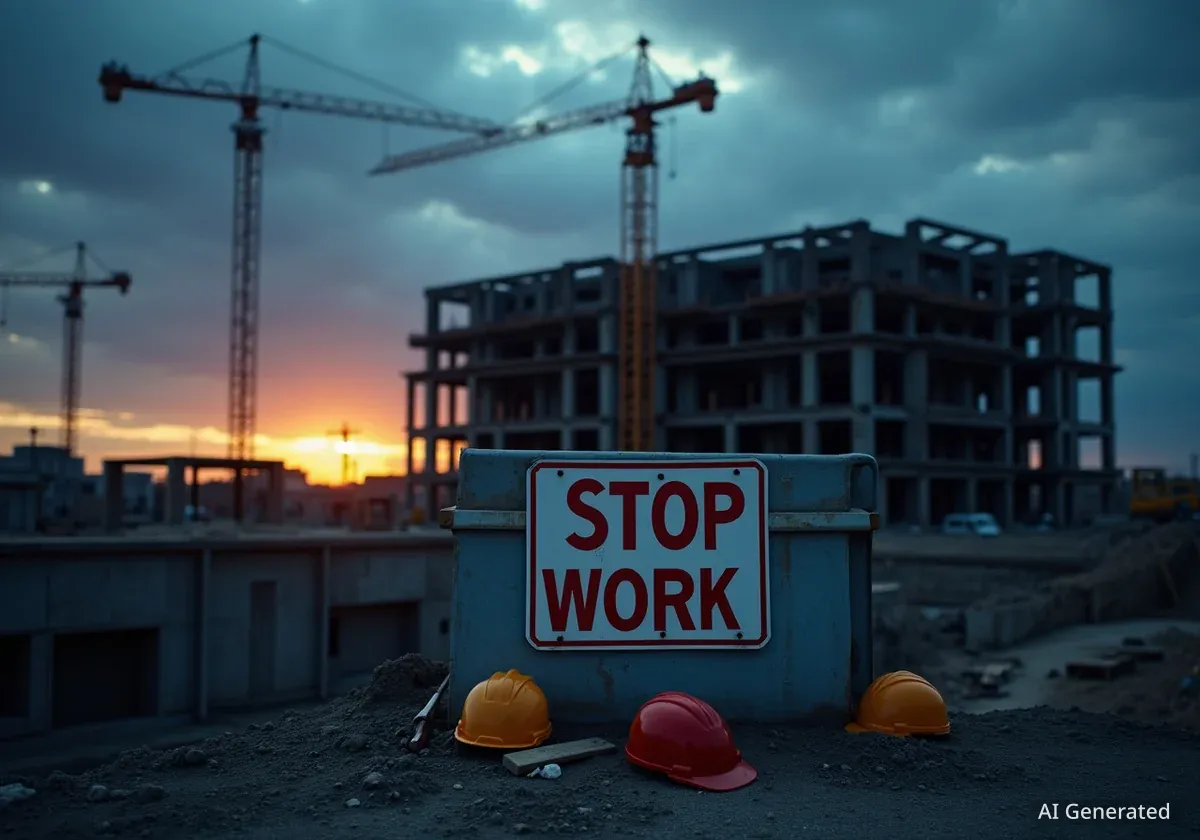Barnes & Noble is undergoing a significant transformation, reversing years of decline with an aggressive expansion plan. The bookseller is moving away from its traditional large-format stores, adopting a flexible real estate strategy that focuses on smaller, community-tailored locations and an updated, modern design aesthetic.
This new approach has led to the company opening more stores in the past year than it did in the entire previous decade, signaling a notable turnaround for a brand once threatened by e-commerce.
Key Takeaways
- Barnes & Noble is set to open 65 new stores this year, adding to its portfolio of over 650 U.S. locations.
- The company has abandoned its rigid 25,000-square-foot store model for flexible spaces ranging from 4,000 to 30,000 square feet.
- New stores feature a brighter, more modern design and are often located in spaces vacated by other retailers like Bed Bath & Beyond and Staples.
- CEO James Daunt has empowered local store managers to customize inventory and layout to better serve their specific communities.
- Merchandise has expanded beyond books to include popular items like vinyl records, Lego sets, and games.
A New Chapter in Real Estate
At the heart of Barnes & Noble's revival is a complete overhaul of its real estate philosophy. For years, the company adhered to a strict playbook, primarily leasing 25,000-square-foot spaces. This model limited its ability to enter smaller markets and adapt to changing retail landscapes.
Today, that rigidity is gone. The company now considers spaces of all sizes, from compact 4,000-square-foot shops to larger 30,000-square-foot locations. This flexibility allows Barnes & Noble to enter underserved communities and capitalize on available commercial properties.
"We have stores of all different shapes and sizes now," Janine Flanigan, the chain's vice president of store plan and design, explained. "We are looking at all kinds of markets, and anyplace we have opened so far has been really successful."
This agility has enabled the bookseller to take over storefronts left empty by struggling retailers. New Barnes & Noble locations are appearing in former Staples, Party City, Bed Bath & Beyond, and Forever 21 stores, breathing new life into vacant commercial spaces.
Entering Untapped Markets
The strategy has unlocked opportunities in smaller cities and suburbs that previously lacked a major bookstore. For the first time in its history, Barnes & Noble has opened a store in Abilene, Texas, taking over a former Bed Bath & Beyond. Another new location in Rockwall, a Dallas suburb, opened in a 20,000-square-foot space previously occupied by Staples.
Background: The Turnaround
Barnes & Noble's peak was in 2008 with over 700 stores. The rise of Amazon and e-commerce led to a prolonged period of decline and store closures. The company's fortunes began to change after it was acquired by hedge fund Elliott Advisors for $683 million in late 2019. The new leadership, headed by CEO James Daunt, initiated the strategic overhaul that is now driving its growth.
Brianna Jenkins, the store manager of the Rockwall location, noted the positive community response. "It's great to have the opportunity to go into a new community where we haven't been previously," she said. "A lot of customers I've spoken with used to drive to stores in Dallas, and now we get to be that home store in the community."
Designing a Modern Bookstore Experience
The changes extend beyond location and size. The classic dark wood and green interior is being replaced by a lighter, more inviting aesthetic. New stores often feature soft-colored walls, light-wood displays, and comfortable reading nooks, creating an environment designed for browsing and lingering.
According to a report from Placer.ai, this approach appears to be working. The firm noted that Barnes & Noble experienced "steadily elevated foot traffic" throughout 2025, with both total visits and average visits per location increasing year over year through August. This suggests the new store designs are resonating with customers.
By the Numbers
- 65: The number of new stores Barnes & Noble is on track to open this year.
- $683 Million: The price hedge fund Elliott Advisors paid to acquire the company in 2019.
- 4,000 sq ft: The smaller end of the new, flexible store size range.
- -1.7%: The decline in total book sales in the U.S. during the first half of 2025, according to Publisher's Weekly, highlighting a challenge for the industry.
In addition to a physical redesign, the product mix has also evolved. While books remain the core offering, shelves now also feature high-demand merchandise such as vinyl records, Lego sets, and games like Minecraft, appealing to a broader range of customers.
The Daunt Philosophy: Local Empowerment
The strategic shift is credited to CEO James Daunt, who was appointed following the 2019 acquisition by Elliott Advisors, which also owns the successful U.K. bookstore chain Waterstones. Daunt's central belief is that local store teams know their customers best.
He has moved away from a centralized, top-down buying structure. Instead, local store managers are empowered to curate their own inventory, design their own displays, and organize their stores in a way that best serves their neighborhood's tastes and preferences.
"One of the things Daunt has done well is to listen to and empower local store teams. They know their customers best, so it is great that they are given more say over things," said Neil Saunders, a retail analyst at GlobalData. He added that this customer-centric approach is a key reason for the company's recent success.
Daunt utilized the retail disruption caused by the global pandemic to accelerate these changes. With financial backing from Elliott Advisors, he kept his team employed and focused on reimagining the business from the ground up.
"I figured there's a little bit more money lost, but if the world opened up again, we'd use this moment to improve our stores," Daunt said on a podcast. "Then, once we do open, we'll have something much better."
Navigating Future Challenges
Despite the positive momentum, Barnes & Noble faces ongoing challenges. The broader economy remains uncertain, and online retailers continue to offer convenience and competitive pricing. Public libraries are also becoming more innovative with their programming to attract visitors.
Furthermore, overall book sales have seen a slight decline. According to Publisher's Weekly, the total number of books sold in the first half of 2025 was down 1.7% compared to the same period in the previous year. To succeed long-term, Barnes & Noble must continue to make its physical stores a compelling destination.
However, analysts like Saunders believe the company's focus on creating a unique, localized experience provides a strong foundation. By adapting its store formats and empowering its local teams, Barnes & Noble has crafted a comeback story that many other struggling retailers could learn from.





